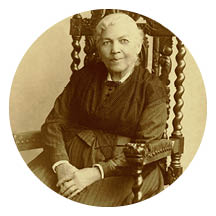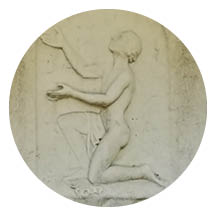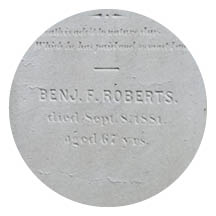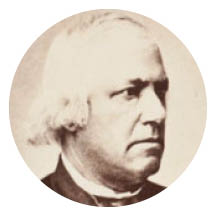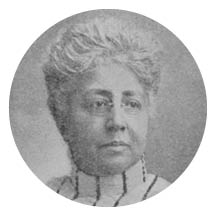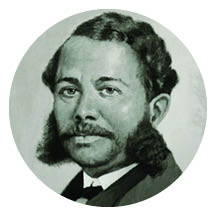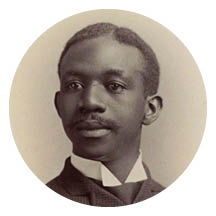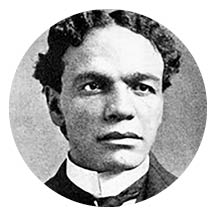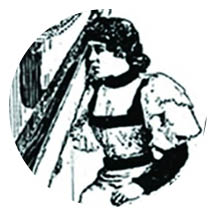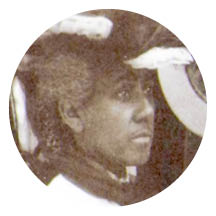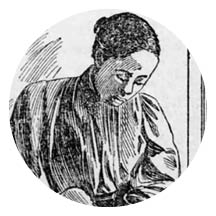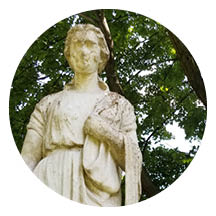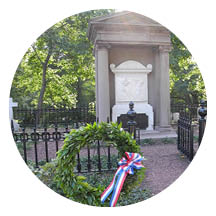Explore the African American Heritage Trail
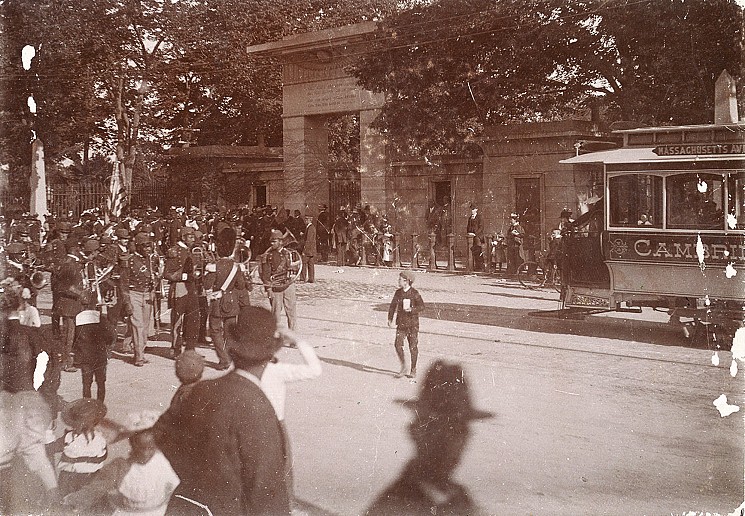
Mount Auburn Cemetery’s African American Heritage Trail illuminates the history of individuals who found their final resting place in a cemetery welcoming of all faiths, races, and backgrounds, and within an interconnected community of those who fought for human equality.
Today, we celebrate these individuals for their enduring contributions, which paved the way for others and helped to shape the American experience.
For Further Reading:
Why Mount Auburn? An Introduction to the African American Heritage Trail.
ENDURING BONDS OF FAMILY
Freedom Seekers are among the Black individuals buried and remembered at Mount Auburn. Enslaved from the time of their birth, these men and women acted to make their dreams of freedom a reality. Their personal histories include the horrific experiences they endured in bondage, the extraordinary accomplishments they achieved as free men and women, and the deep family connections they held sacred throughout their lives. Buried at Mount Auburn, they came to rest with loved ones and among a community of those who supported their families’ fight for freedom.
A SYMBOL OF THE CAUSE
In 1831, the year of Mount Auburn’s founding, Henry A. S. Dearborn, one of Mount Auburn’s founders and designers, wrote that at the new cemetery “there will repose the ashes of the humble and exalted, in the silent and sacred Garden of the Dead.”[1] In the years that followed, among its hills and valleys, meadows and ponds, the Cemetery became a cultural landscape of memorials dedicated to the dead and in some cases the causes important to them. The monument for freedom seeker Peter Byus, a symbol of the abolitionist cause, has inspired visitors to the Cemetery since the 19th century.
REFORMERS AND THEIR COMMUNITY
Along with Baltimore, New York, and Philadelphia, Boston was a focal center of the abolitionist movement. Many of the local individuals who were part of this extensive network are now buried at Mount Auburn. Born in the early nineteenth century as free men and women, Benjamin Roberts, Joshua Smith, and Josephine Ruffin established their own entrepreneurial enterprises and worked tirelessly to secure freedom and equality for all African Americans.
HARVARD AND THE LAW
The Cemetery historically shared deep connections with Harvard University. “The vicinity of our venerable University suggests an interesting train of associations, connected with this spot,” Harvard President and Mount Auburn Trustee Edward Everett explained. “It has ever been the favorite resort of the students. . . . It will become the place of burial for the University.”[1] Harvard faculty and graduates who have since been buried at Mount Auburn include noted abolitionists Henry Wadsworth Longfellow, James Russell Lowell, Henry Ware, Joseph Story, and Charles Sumner. It was also here that George Ruffin, Clement Morgan, and William Henry Lewis, among the early African American graduates from Harvard Law School, came to rest.
REDISCOVERED SOULS
Within Mount Auburn are the gravesites of those who have only recently received the recognition that they deserve. Katherine Knox and Myrtle Hart, a bicyclist and a harpist, both blessed with talent, rose to the top of their professions. More recent efforts to celebrate the accomplishments of Clement Morgan have also brought to light the stories of his wife, Gertrude Wright and their close friend Adina White. We are grateful to the scholars and family members who introduced us to these four incredible women while researching Mount Auburn’s records.
CEMETERY ICONS
In addition to the gravesites of individual African Americans buried at Mount Auburn, monuments throughout the Cemetery stand as reminders of a community that fought for racial justice. They include memorials to Charles Sumner, Julia Ward Howe, and George Luther Stearns, white men and women who gave their hearts and souls to the abolitionist movement. Memorials that rank among the Cemetery’s most iconic symbols also tell this story: the statue Hygeia, by Edmonia Lewis, the great nineteenth-century African American sculptor; the memorial to Rev. Charles Turner Torrey, an abolitionist and “martyr to freedom”; the cenotaph of Col. Robert Gould Shaw, who led the 54th Massachusetts Regiment; and the Sphinx, the Cemetery’s magnificent memorial to the Civil War.
WALK THE TRAIL
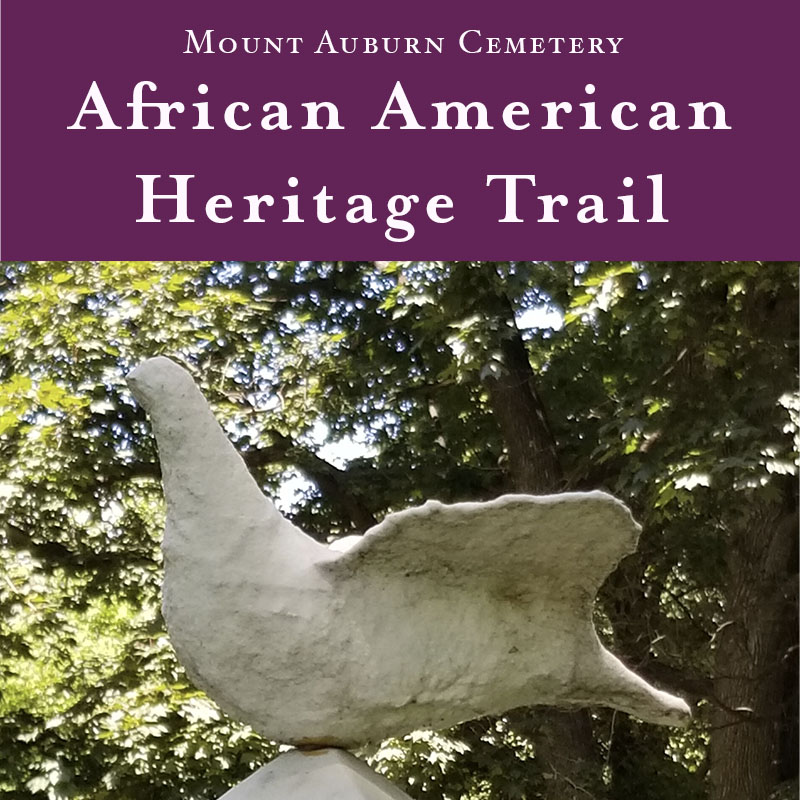
Are you planning a visit to Mount Auburn?
The African American Heritage Trail is one of the featured tours on our mobile app.
A cemetery ought to be a place where the living and the dead mix on happy and useful terms. This is described as a place of repose and so it is, but it is also a place of purpose, and that purpose celebrates life and beauty, nature and the mysteries of God, which the theologians themselves cannot even begin to express or understand.
It is a splendid enterprise.
The Reverend Peter Gomes, Plummer Professor of Christian Morals and Pusey Minister at The Memorial Church, Harvard University, speaking at the 175th Anniversary of Mount Auburn’s Consecration,
September 24, 2006.
ACKNOWLEDGEMENTS
Funding for this project has been provided by the 1772 Foundation; Mass Humanities; the Association for the Study of African American Life and History (made possible by the National Park Service, National Underground Railroad Network to Freedom); the Cambridge Arts Council and the Watertown Cultural Council (local agencies supported by the Massachusetts Cultural Council, a state agency); and contributions from Sydney Nathans, Mary K. Zervigon, and the family of Katherine Knox.



TOP IMAGE:
Visitors including African American musicians gathering in front of Mount Auburn’s Egyptian Revival Gateway, ca. 1870-1900 cabinet card. Historical Collections, Mount Auburn Cemetery.
